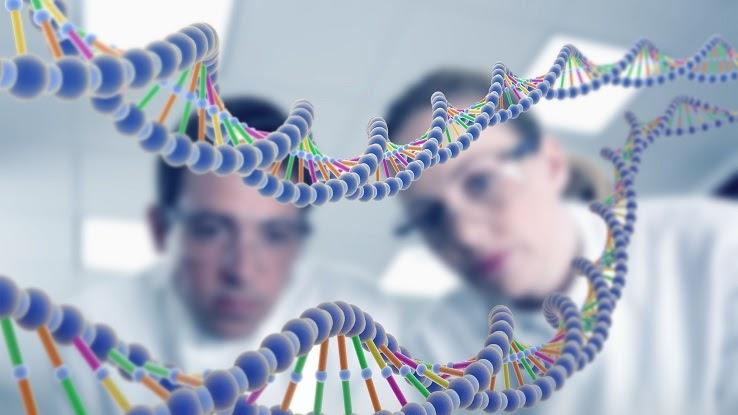What Are Genes? Genetics 101 for All Ages

If anyone has ever said you look like your parent, sibling or other relative, you have genes to thank. In fact, many biological families look alike and share other traits due to genes. So, what else do genes do? And what, exactly, are these characteristic-determining things? Here, we’ll dive into genetics 101, so that you can have a better understanding of your biology.
What Are Genes?
Genes are defined by Merriam-Webster as the part of a cell that influences a living thing’s appearance, growth and more. This “functional unit of inheritance” controls the transmission and expression of traits. In other words, genes are sets of information that are made up of DNA, and they determine what a person looks like as well as how they act. “Some genes act as instructions to make molecules called proteins,” the U.S. National Library of Medicine notes. “However, many genes do not code for proteins.”
All of us have two copes of each gene — one from each parent. Although many of our genes are the same, a small amount of them differ from person to person. Called “alleles,” these alternate forms of the same gene will have their own small differences, which contribute to your unique features.

Terms like “heredity” and “hereditary” relate to what you inherit — what’s passed on from a parent to their offspring. So, the hereditary information found in genes is something kids inherit from their parents. For example, you inherit traits from your mom and dad, and they inherited traits from your grandparents. These inherited genes are like instructions for your body, so that it knows how to grow, appear and, sometimes, feel.
How Do Genes Work?
Genes, the blueprints for the human body, are made up of DNA, a protein that’s like the language of your body. Various types of cells know how to translate this language into instructions and, as a result, carry out their specific jobs. As you can imagine, it takes a lot of DNA to show all the different types of cells how to function. Some genes are very simple with only a few thousand bits of DNA; other genes are more complex with millions of bits of DNA.

Often, genes are found on chromosomes — tightly wound strings of genetic information that look like spools of yarn. While chromosomes are full of genes, they too rest in a particular part of the cell — the nucleus, the cell’s “brain” that tells the cell’s parts how to do their jobs. And the nucleus gets all that information from chromosomes and the genetic information in genes.
The Role Genes Play in Inherited Diseases
Genes determine how the body will develop. If a gene varies from the “norm,” that person’s body will develop accordingly. This is why genes are responsible for some diseases. Called genetic disorders, these diseases are inherited, with the parent(s) passing these genes down to their children. Sometimes, a parent will have the genetic disorder, but other times they simply carry the genes that can cause such a disease. Sometimes, a child only inherits a genetic disorder if both their parents carry the gene that causes a particular disease.

Often, parents who carry a gene for a certain disease do not have any symptoms of the illness themselves. This is why two healthy parents can have a child with a genetic disorder. If a doctor has ever asked you about your family’s medical history, this is why.
Genetic disorders and other health conditions that your parents, grandparents and other close biological relatives have experienced can give your doctor a sense of your future health. Even if your parents don’t experience a particular genetic disorder, a disease’s presence in other close relatives might indicate that you’ve inherited said disease. Some genetic disorders include attention deficit/hyperactivity disorder (ADHD), colon cancer, breast cancer, high cholesterol, sick cell disease and Parkinson’s disease. Of course, some of these illnesses can stem from other factors, too.
Why Do Scientists Study Genes?
Today, scientists have the ability to look on a patient’s family history to determine which genes caused a particular inherited disease. However, this type of study often happens only after several members of a family have lived with the same genetic disorder or disease. By studying genes, scientists can identify the abnormalities and, perhaps, find a fix before patients exhibit symptoms.

There are many advancements being made in this field. For example, scientists have learned that BRCA 1 and BRCA 2 genes make a person very likely to develop advanced breast and ovarian cancers. There have been families who carry this gene where most women have historically not lived into their 60s because of cancer. Now, doctors are able to test patients for this gene; testing is especially recommended for patients who have a family history of breast cancer. People who know that they have BRCA genes are able to take preventative steps, which can include having breasts or ovaries removed or starting hormone therapy to decrease their risk of developing an aggressive form of cancer.
Gene therapy is another growing field of medicine that involves fixing genes rather than treating the problems that genes produce. This may involve taking a gene out of the body and replacing it with one that does not cause disease. It can also include putting a new gene in the body that fights off a certain disease. Scientists are even studying ways to leave bad genes in the body but stop cells from carrying out these harmful instructions.





